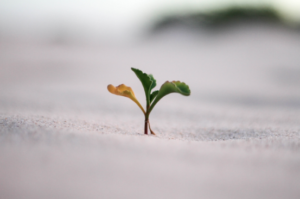
You know those moments when you get smacked in the face with a “DUH!”? I recently had one of those.
Last week, I was honored to speak at the Community Summit in Washington State, a conference that serves those with disabilities. The basic mission is to mainstream those with disabilities, to cultivate and honor the gifts they bring to community — to get them access to careers they love and in which they can thrive. This is a beautiful mission that is extremely difficult, for many reasons, not the least of which is because those without disabilities can often feel awkwardly uncomfortable around those with disabilities. We assume that what we see is what they are. Which is ridiculous, really, if you take two seconds to think about it. Of course they have gifts! Of course they have something to share with the world! Of course they can make a workplace better! But all too often we don’t see that right away, because they may not look or sound or speak or think like we do.
The more I learn about the work these amazing people do through organizations like SAIL: Self Advocates In Leadership, and Wise, and St. John’s, and APSE, the more I come to understand an even greater realization: everyone has a disability. Some are just more easily accommodated. How many of you wear glasses or have had vision corrective surgeries? Anyone cut off a little closer to the ground needing a step-stool when others can reach just fine? These are accommodations to help you succeed — they’ve just been normalized.
Consider fidget spinners.
They were invented as an accommodation to help people with Autism to focus and not be distracted. It helps them learn and perform better. Able-bodied people look at them as fun. The amount of inventions and accommodations that have been developed for disabilities that people “without the disability” actually prefer to use is SO long it would take a book, not a blog article, to list them all. Think the larger stalls in the bathrooms that so many people seem to prefer, ramps, levered door handles versus knobs, graded curbs, half the apps on your iPhone…
What’s fascinating here is that the more we accommodate people with disabilities, the better off EVERYONE else is, too. Their needs generate creative, smarter, more efficient, easier to use, more logical solutions…and yet we still too often see those with disabilities as somehow ‘lesser than.’ They make us uncomfortable. They fidget, or slur their speech, or have trouble looking you in the eye. (Sounds like some able-bodied people I know:-))
We always seem to want to feel comfortable, as if discomfort is to be avoided, and that’s a problem. As leaders it is part of our job to be comfortable with discomfort, because we know that is where the growth occurs.
We need to recognize that our discomfort is okay. It’s okay to be uncomfortable. It’s okay to feel awkward. When we can notice that discomfort, then we can do something about it, not by avoiding the discomfort but by stepping into it. We’re willing to go to the gym and sweat, right? No pain no gain, right? Why? Because we know that discomfort leads to improvement. So why do we avoid discomfort so ardently, going so far as to ignore or even mock those people or situations that make us uncomfortable?
Being comfortable with the uncomfortable is the doorway to growth, strength, and improvement. The things we feel awkward around may very well hold the greatest insights into our greatest achievements.
Where is it time for you to embrace the uncomfortable?
